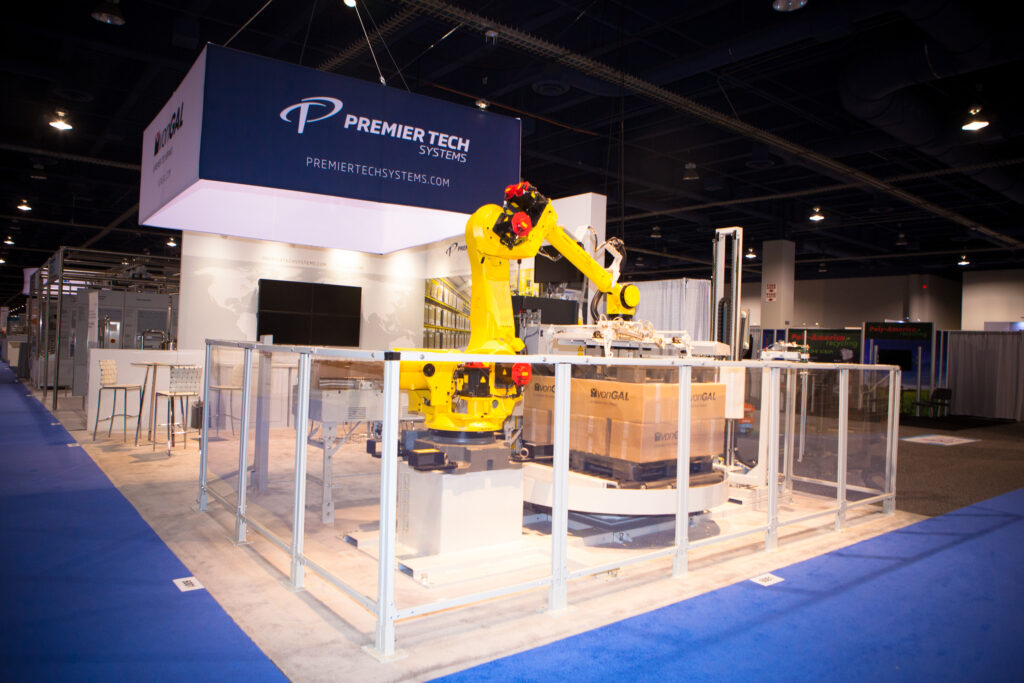
Your trade show booth is more than just a structure on the show floor—it’s the physical embodiment of your brand. Every decision about booth space, design, and location influences how attendees perceive your company and whether they stop to engage. To maximize ROI, exhibitors need to understand not just the booth itself but also the environment around it.
Why Booth Location Matters
Just like real estate, booth space is all about location. Premium spaces at the front of the hall, near entrances, lounges, or food courts cost more—but they also provide higher visibility and stronger traffic flow.
- Prime locations attract larger crowds but require bigger staffing budgets to manage increased traffic.
- Corner booths benefit from exposure to two aisles, making them more open and approachable.
- End-cap or peninsula booths allow for more dramatic designs but must comply with line-of-sight regulations.
- Island booths (open on all four sides) maximize visibility but come at the highest cost.
Pro tip: Consider who your neighbors will be. Being next to large, well-known companies can draw traffic your way—if your staff is prepared to capture it.
Choosing the Right Type of Booth
Once you know your location, the next step is choosing a display that aligns with your goals and budget. The most common options include:
- Custom exhibits: Tailored to your brand with maximum impact, best for companies with frequent large shows.
- Rental booths: Offer flexibility and lower upfront costs. Rentals also allow for fresh designs at each show.
- Portable displays: Cost-effective and easy to transport. Ideal for smaller shows or startups testing the waters.
Each booth type has its advantages, but the key is selecting one that matches both your marketing goals and your show schedule.
Designing for Space and Flow
A great booth design works with the space, not against it. Consider:
- Traffic flow: Create open entry points and avoid bottlenecks.
- Storage: Keep personal items and collateral hidden to maintain a professional look.
- Height restrictions: Different booth types have different allowable heights. Plan graphics and signage accordingly.
- Engagement areas: Dedicate space for demos, conversations, or quiet corners where in-depth discussions can take place.
Preparation Is Key
Nothing leaves a worse impression than an underprepared exhibitor. Attendees have limited time and expect professionalism. To avoid pitfalls:
- Staff adequately: Match staffing levels to expected traffic.
- Train your team: Ensure they are approachable, knowledgeable, and focused on engagement.
- Overprepare: Bring backup supplies, extra collateral, and contingency plans. It’s better to be over-prepared than caught short.
The Bottom Line
Knowing your booth and your booth space is about more than square footage. It’s about strategically choosing a location, selecting the right type of display, designing for flow and engagement, and preparing your team. Done right, your booth becomes more than a structure—it becomes a powerful marketing tool that draws attendees in and leaves a lasting impression.
Pro tip: Absolute Exhibits has helped companies maximize booth space strategy with custom designs, rentals, and turnkey exhibit solutions that balance creativity, practicality, and ROI.
Booth Space Planning Checklist
- Evaluate booth location and traffic flow
- Research neighboring exhibitors
- Select the right booth type (custom, rental, portable)
- Ensure compliance with booth height and line-of-sight rules
- Design for open entry points and clear engagement zones
- Plan storage to reduce clutter
- Staff adequately for expected traffic levels
- Prepare backup supplies and collateral



